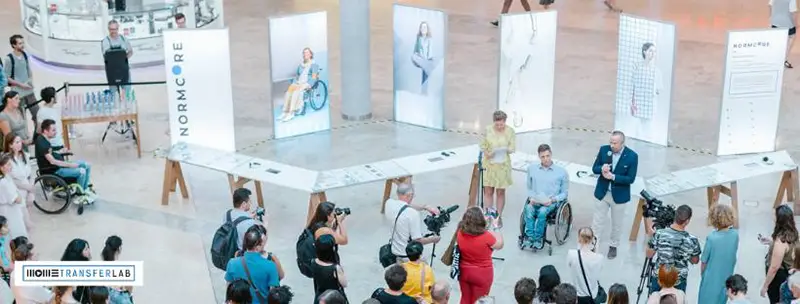
NORMCORE project showcases clothes made for people living with disabilities
The way we dress is a constant reflection of what we deem important to say about ourselves. Occasionally, however, we wish to step out of this field of created constructs and wear clothes that do not carry any additional meaning. Clothes that are devoid extra layers of meaning and emphasise pure practicality.
In contemporary fashion, this trend is labelled normcore (combining the words normal and hardcore) and refers to the excessively ‘normal’ set of clothing. The creators borrowed this term from contemporary fashion theory and created the project NORMCORE, creating clothes with disabled people to fit all bodies.
The concept of Normcore is to get us asking questions about our relationship with normality. Does a normal body exist? What is normal? What is our responsibility in the formation of these concepts in society? Fashion design undoubtedly has an immense role and communicative potential in shaping this dialogue.
Produced at Moholy-Nagy University of Art and Design and exhibited at the TransferLab in Hungry, it wants to strengthen the social visibility of disabled people – making disability the norm.
The designs have been created for and in collaboration with disabled people. While the clothes are fit for women with a variety of disabilities and are completely functional, they also prompt re-evaluation of our prejudices regarding disability.
The exhibited fashion photographs portraying disabled models aim to show what happens when fashion design meets real needs and conveys something about the person wearing it. The photos are accompanied by sketches, video interviews and statements from the creators, giving a well-rounded picture of the design process.

The project started back in 2016 spring with a course titled Fashion for Every Body held at MOME. This project saw six students majoring in textile design and three models, all with missing limbs, working together. Although the project started as a one-week assignment, it exceeded it both in time and energy investment.
The garments shaped by the team, which the models could keep after the project, were taken on by the students of the collaborating Media Design department in the form of a course titled Space for Every Body.
The work of the designers shows how to address the environment in a radical way without provocation, with humour and by rethinking fixed ideas.
As soon as disabled people are not addressed as subjects but as co-creators, their experience and culture can shape design the same way as design can shape lives and the social perception of the people living with disabilities.
Thus, instead of the destructive attitude of evoking pity, a partnership can emerge that might just be the most optimal version of social visibility.
By NORMCORE
More on Disability Horizons…